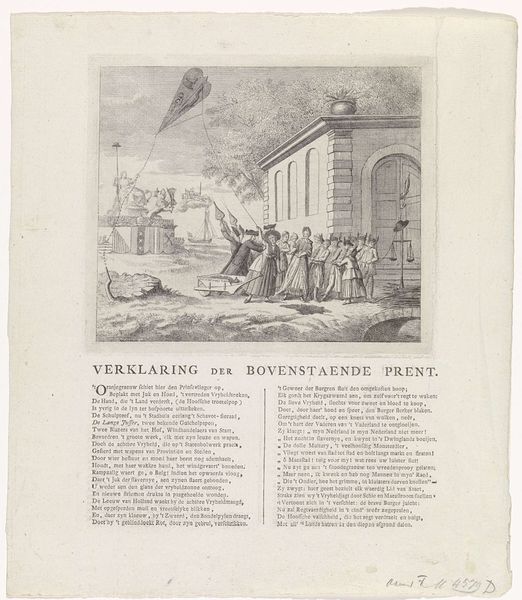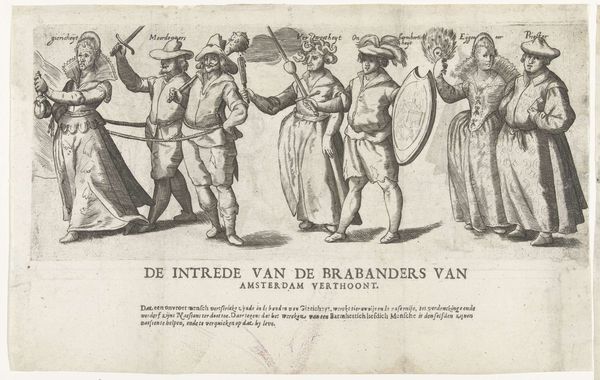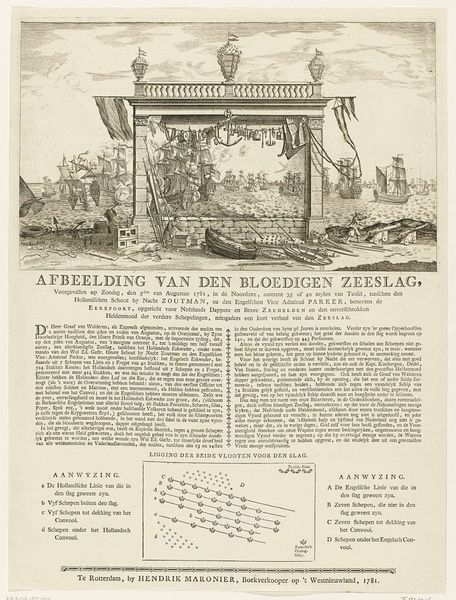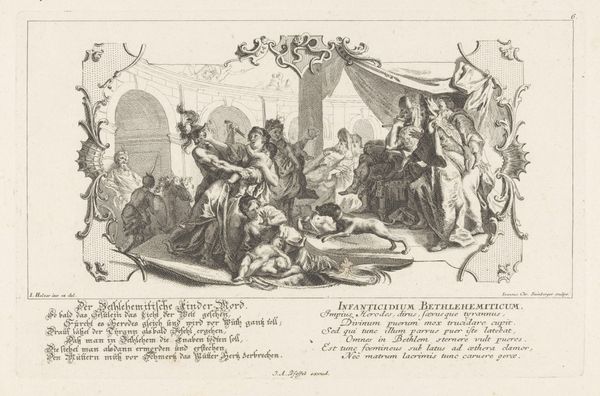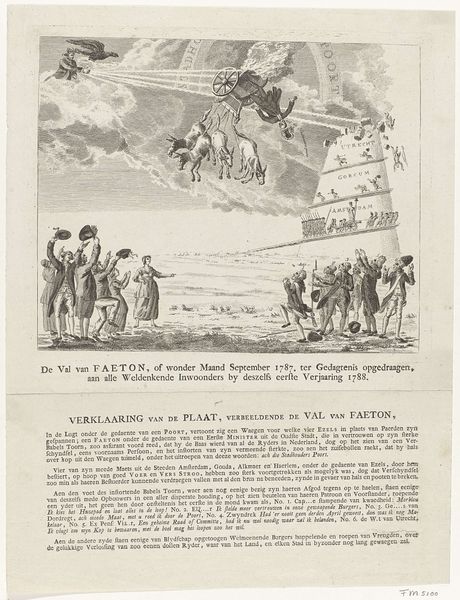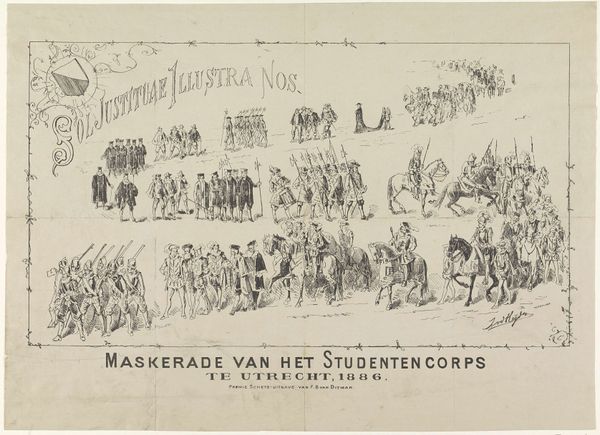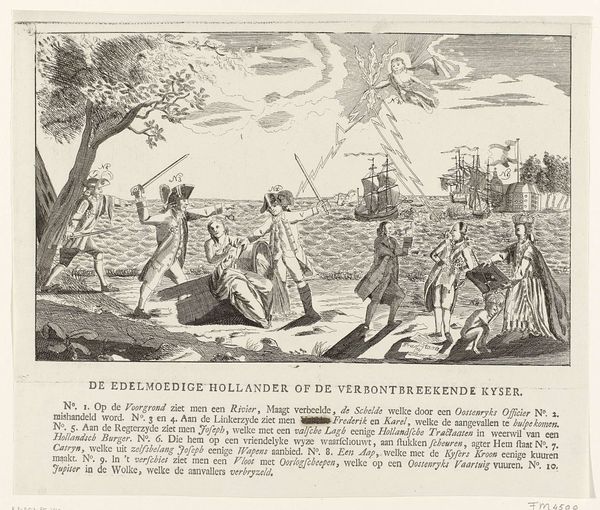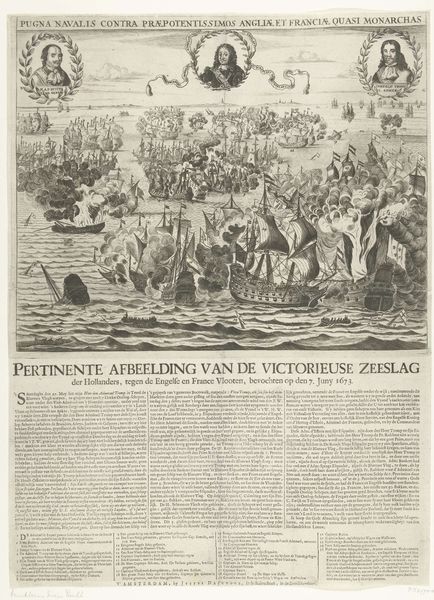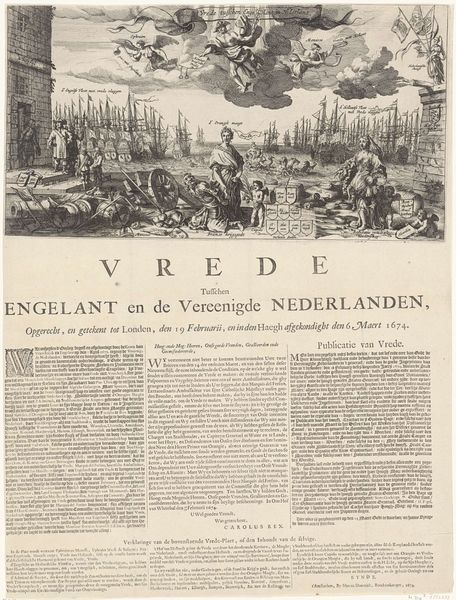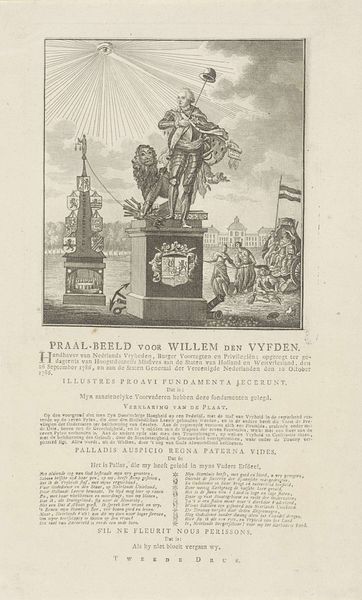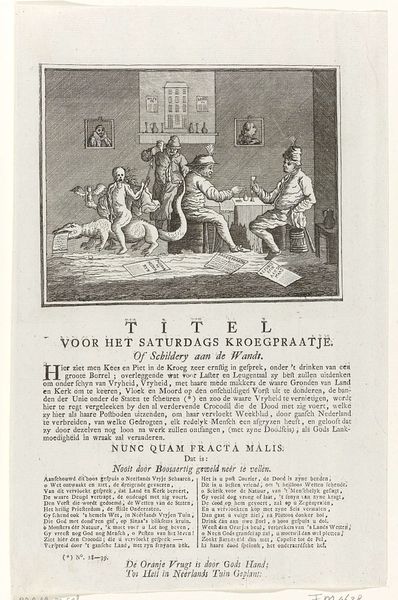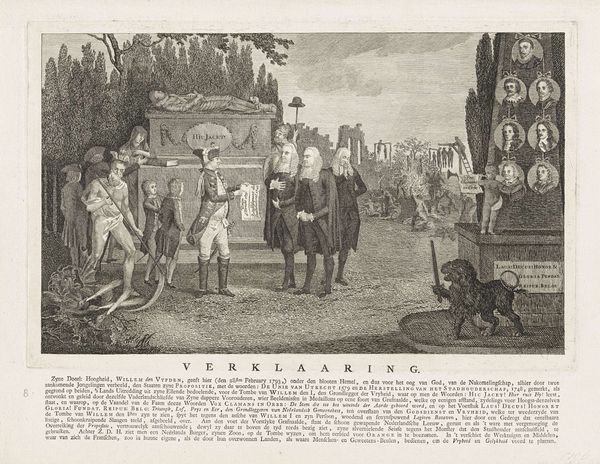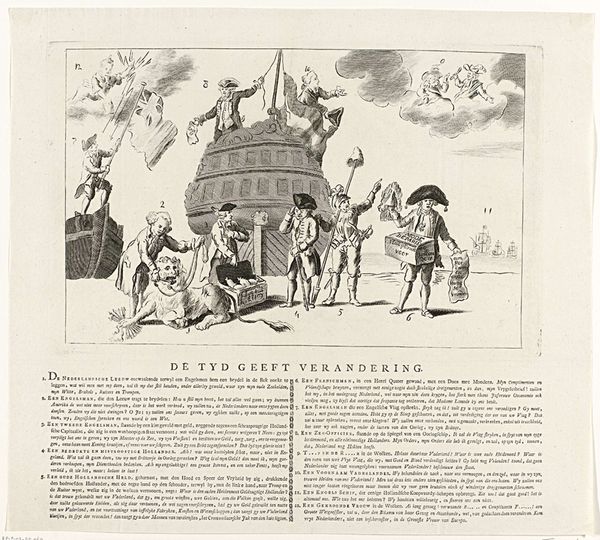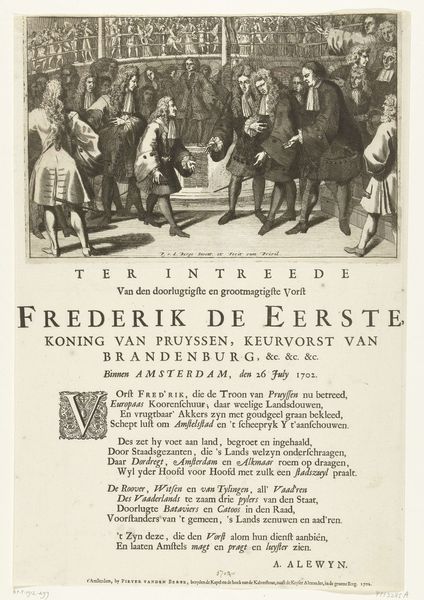
Dimensions: height 318 mm, width 365 mm
Copyright: Rijks Museum: Open Domain
Curator: The Rijksmuseum holds a fascinating print, dating back to 1780, called "Allegorie op de Gewapende Neutraliteit," or "Allegory on Armed Neutrality" in English. It's an engraving, created by an anonymous artist. What's your initial reaction? Editor: It strikes me as very staged, almost like a tableau vivant meant to express a specific political idea. There's a lot of formality and symbolic imagery packed into one scene. Curator: Precisely. The work references the League of Armed Neutrality, a coalition of European powers formed to protect neutral shipping during the American Revolutionary War. Look closely; you'll see various figures representing these nations. Each holds a symbolic object that indicates their role. Editor: I see figures posed to signify particular stances, like a theatrical declaration of power, all radiating from this central beam of light with the "all-seeing eye." The artist positions neutrality not just as a political decision, but as something divinely ordained. Curator: Exactly. The eye could symbolize divine oversight or perhaps vigilance, reminding viewers of the constant watchfulness needed to maintain neutrality in a world at war. And the objects help anchor this work into a cultural memory, these easily-understood motifs become embedded with meaning and can resonate with future audiences. Editor: Which can be powerful... but I wonder about who it excludes. Does this alliance, portrayed in such idealized terms, address its own colonial ventures, the uneven power dynamics? The artist appears invested in this particular political viewpoint, not necessarily in probing uncomfortable truths. Curator: That's a valid critique. Its purpose was likely to boost morale and convey solidarity in the face of geopolitical tensions. But now, through contemporary eyes, we are attuned to seeing which viewpoints are amplified, and those left unspoken. Editor: Absolutely. This print serves as a potent reminder that art, even when it uses historical or mythological imagery, can be very much rooted in its time. Curator: Well, reflecting on its historical and cultural significance is vital, as we continue navigating power dynamics across the world. Editor: Right, this helps understand historical narratives and how artists contributed to—or challenged—those narratives at the time.
Comments
No comments
Be the first to comment and join the conversation on the ultimate creative platform.
